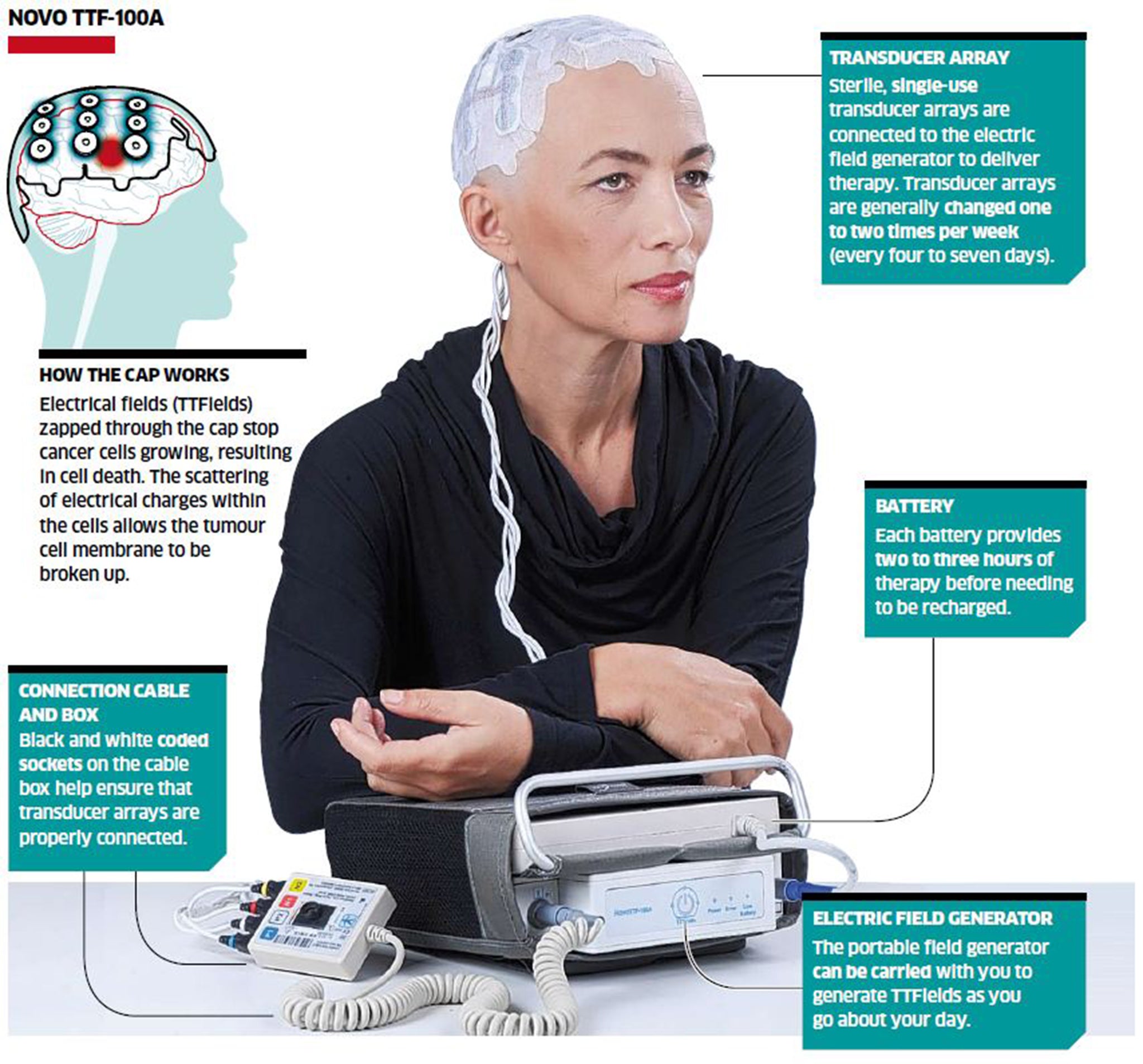NovoTTF-100A: The 'anti-cancer hat' giving hope to brain tumour patients
A new device, worn on the move, can prolong life without chemotherapy, radiation, or surgery

Your support helps us to tell the story
From reproductive rights to climate change to Big Tech, The Independent is on the ground when the story is developing. Whether it's investigating the financials of Elon Musk's pro-Trump PAC or producing our latest documentary, 'The A Word', which shines a light on the American women fighting for reproductive rights, we know how important it is to parse out the facts from the messaging.
At such a critical moment in US history, we need reporters on the ground. Your donation allows us to keep sending journalists to speak to both sides of the story.
The Independent is trusted by Americans across the entire political spectrum. And unlike many other quality news outlets, we choose not to lock Americans out of our reporting and analysis with paywalls. We believe quality journalism should be available to everyone, paid for by those who can afford it.
Your support makes all the difference.Its name, the NovoTTF-100A, doesn’t trip off the tongue. But the device, known among researchers as the “anti-cancer hat”, may soon prove a lifeline to patients with brain tumours. Early trials of the device are reported to increase patients’ chances of surviving two years by up to 50 per cent.
A white skull-cap wired to a battery pack, the device – which has been in development for more than 14 years – has been hailed as a new, effective treatment for cancer that does not require doses of debilitating chemicals, radiation, or the surgeon’s knife.
Its manufacturer, Novocure, says it can help to rid you of cancer as you pack the shopping or do the washing up. That may or may not prove correct, but early evidence suggests that the treatment is highly effective.
The cap works by preventing cancer cells from dividing by emitting a wave-like electrical field into the brain. Developed exclusively to treat the most common form of adult brain cancer – glioblastoma – it is made for a disease with a very poor prognosis: the average life expectancy is only 14 months from diagnosis, even with chemotherapy and radiotherapy.
Of the 315 glioblastoma patients who entered a recent trial – all of whom were also receiving chemotherapy – 43 per cent wearing the device were alive two years later, compared with 29 per cent who were not. Removed glioblastoma tumours also took longer to regrow: 7.1 months compared with four months.

Of 20 glioblastoma patients who first trialled an early version of the device, four are still alive. Medical experts say nearly all glioblastoma patients die within five years.
Ariane, 35, who lives in Germany, is among those early patients to wear the cap. She was diagnosed almost two years ago while pregnant. Her baby survived, but Ariane’s glioblastoma returned, despite her having undergone surgery, chemotherapy and radiotherapy. She now wears the device everywhere and is happy not to suffer the side effects of chemotherapy.
“I do everything like I did it before,” she said. “I continue to play with my one-year-old son. I go walking and shopping and I just put the battery pack in the storage compartment of the buggy.”
The treatment comes at a price, however: the device and additional support cost £17,000 a month.
Join our commenting forum
Join thought-provoking conversations, follow other Independent readers and see their replies
Comments